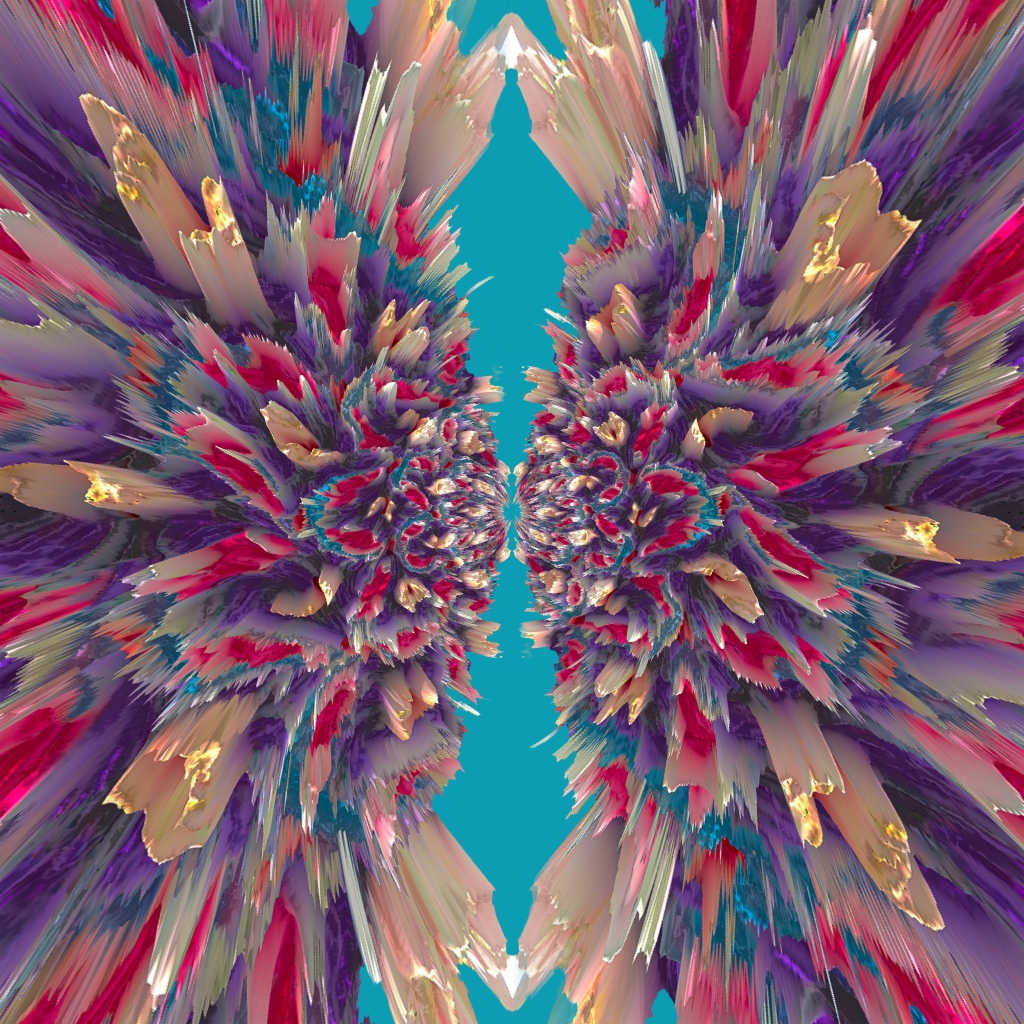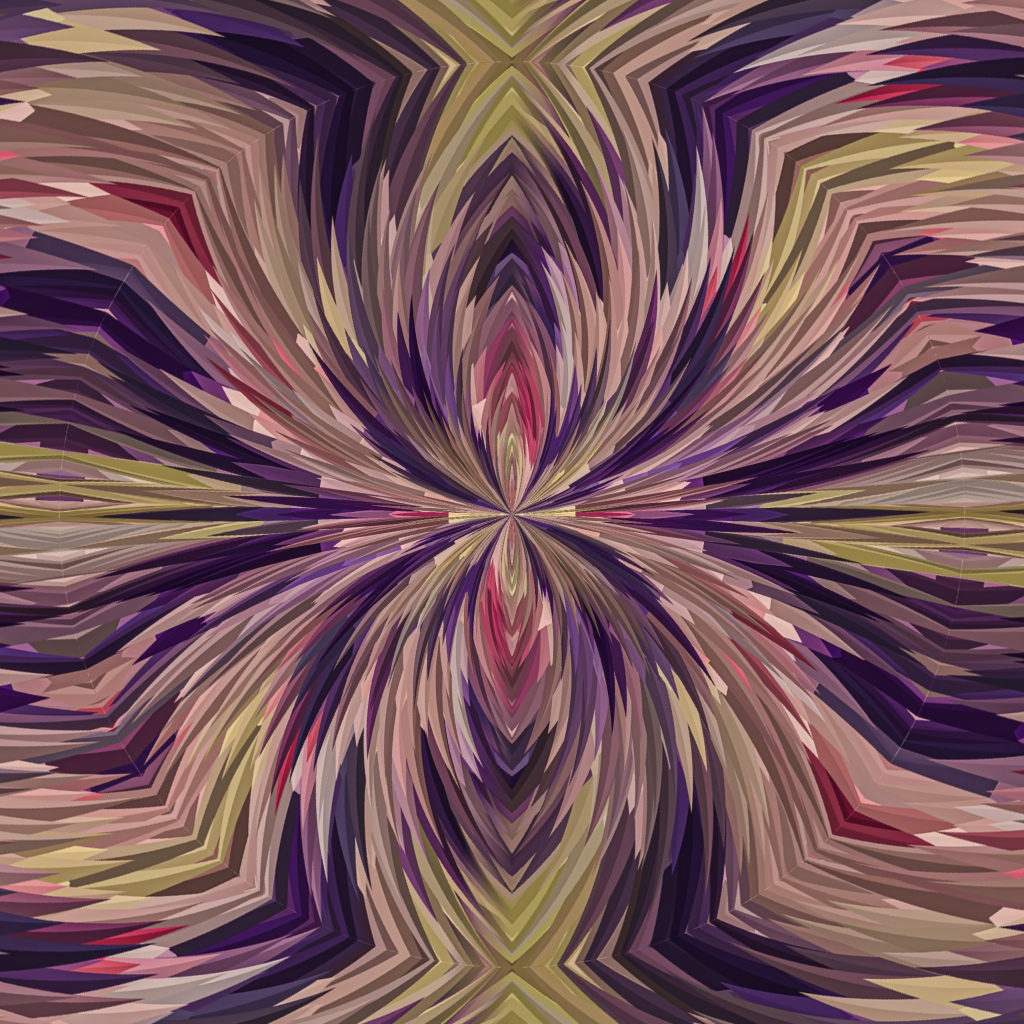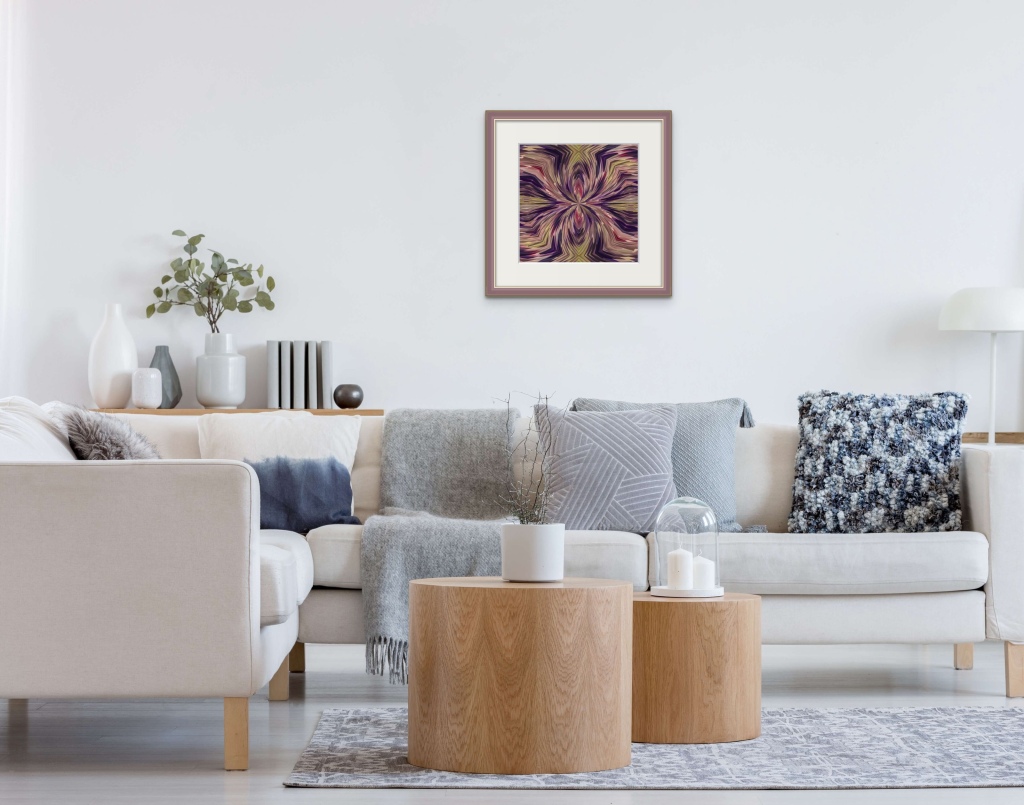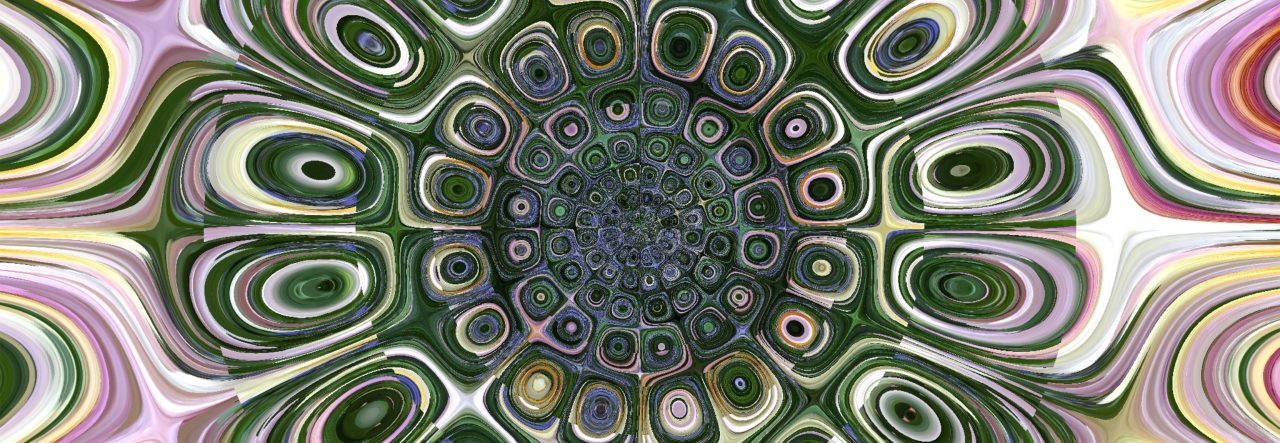I’ve created Ruffled created specifically for patterns, textures, and forms competition.
It challenged me to think specifically about texture inspired by buttered pancakes—I was pondering what texture means for me as a 2D artist and spreading soft butter on cold pancakes.
As I slid the knife across the pancakes it created rows of butter like cornfields. I thought it an example of texture, something that in a more solid form I could feel, like a blind person reading braille. But it wasn’t the butter so much as the rows without butter that created a texture.
Turning to my art, I thought that for me to aim for texture, I needed to remove things–absence of light, such as shadow; absence of intensity, such as desaturated color, or as is the case with my plate of pancakes, absence of butter, so such as absence of image. But the artwork needed a point of entry. Divide and conquer and you create patterns. Finally take a bite out of that pancake giving it form for points of entry for 2D artwork to appear 3D.
This digital photography abstraction work began with a photographic capture of a quilt I started in my teens and have used for half of my life now. Let me know what you think.

Fringe is my current second effort to expand on texture in art.
How do you create 2D art to look 3D? Does texture just the feathered jagged edges of Ruffled or are there other ways to create texture that don’t involve something so blatant?
Fringe is one response to that question and my other newest piece begs the question if subtler images expand on texture.
(This image also looks like one of those artworks you would look at in a gallery and say under your breath sending out cosmic waves to the artist, “I could do that myself.” Perhaps you could but because this work was an effort at trying to recreate parts of Ruffled and then redirecting the path to here all from my signature start from a photograph it took me a couple of days of long hours to create it. It has given me a new appreciation towards all those artworks hanging in museums to which I too have said or thought the same thing.)
How about you? Do you think I have created texture and why or why not? This is your chance to tell an artist or another artist what you think.
Send me a message to talk more about purchasing prints or limited edition fine art prints.




Pingback: How to Create Texture – MAD Production. Company.